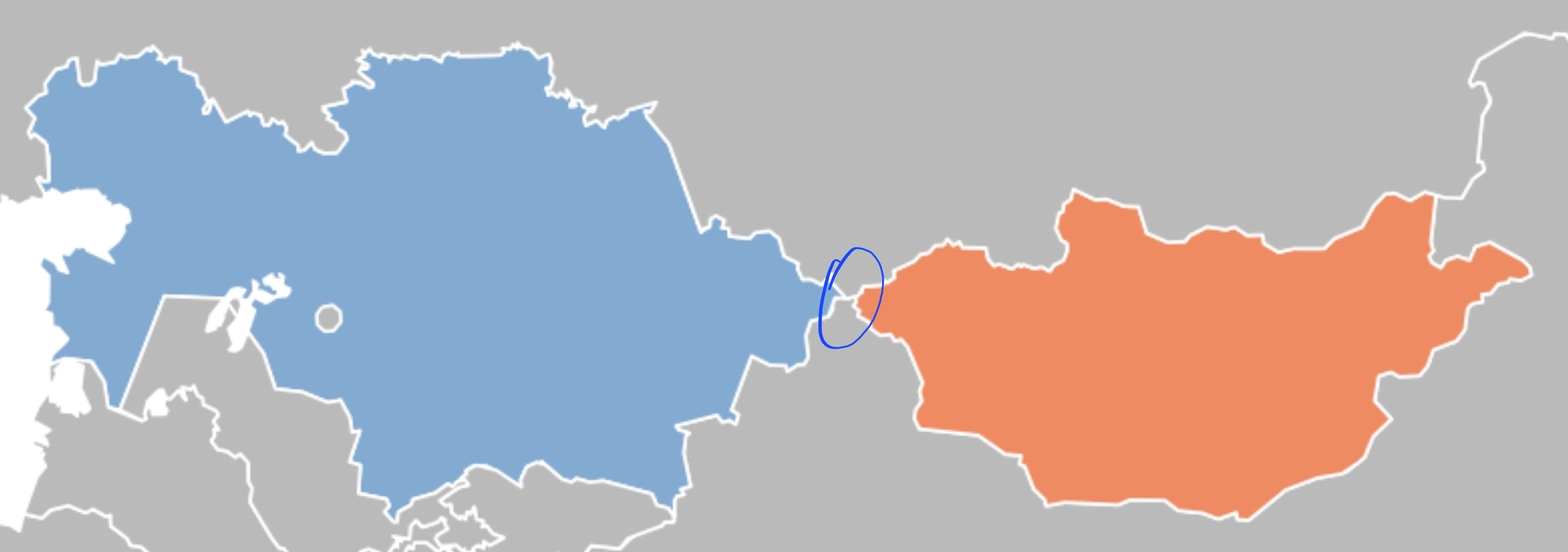No, Kazakhstan does not share a border with Mongolia. The two countries are separated by a stretch of land where the borders of Russia and China meet. The closest points between Kazakhstan and Mongolia are about 55 kilometers (approximately 34 miles) apart, with Russian and Chinese territories in between.
Why Kazakhstan and Mongolia don’t share a border?
During various historical periods, the geopolitical dynamics among regional powers significantly influenced the borders in Central Asia. The modern state borders were further solidified during the 20th century, especially during and after the Soviet era, as the USSR had a significant influence over the region, it was in USSR / Russia’s best interest to keep the borders separate.
Through various back-door agreements, China and Russia dictated the terms for most of the borders in Central and Inner Asia, thus for geopolitical and profit related reasons they agreed to keep Mongolia’s and Kazakhstan’s border separate.
What if Kazakhstan and Mongolia shared a border?
If Kazakhstan and Mongolia shared a border, several dynamics could potentially be different between the two nations and in the Central Asian region as a whole. Here are some speculative scenarios:
- Trade and Economic Relations: A direct border could potentially enhance trade and economic relations between Kazakhstan and Mongolia, making cross-border trade more straightforward and less costly. It might allow for better exploitation of natural resources and facilitate the movement of goods, services, and capital between the two countries.
- Political and Diplomatic Relations: Sharing a border might lead to closer political and diplomatic ties between Kazakhstan and Mongolia. It could necessitate more bilateral agreements and cooperation on border security, customs, and other cross-border issues. Moreover, a shared border might also lead to a more active role in regional blocs or initiatives.
- Infrastructure Development: A shared border might prompt infrastructure development to facilitate transportation and communication between the two countries. This could include the construction of roads, railways, and border crossing facilities, potentially boosting the regional economy.
- Cultural Exchanges: Direct border access might encourage more cultural and people-to-people exchanges between the populations of Kazakhstan and Mongolia. It could make it easier for citizens of both nations to travel, work, and study across the border.
- Regional Dynamics: The regional geopolitics could be affected with a direct border between Kazakhstan and Mongolia, as it might alter the dynamics of their relationships with neighboring powers like Russia and China.
- Tourism: Tourism might see a boost with easier access to the unique landscapes and cultural heritage sites in both countries, potentially benefiting the local economies.


Comment (0)